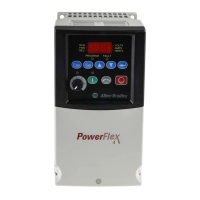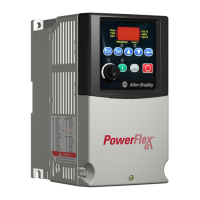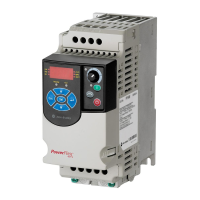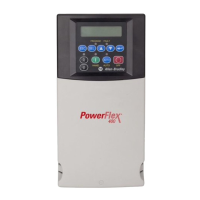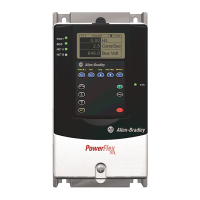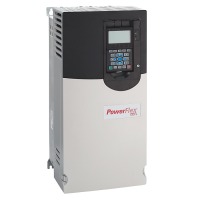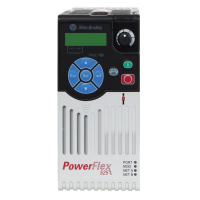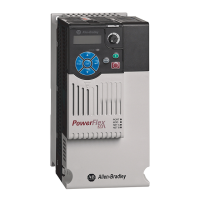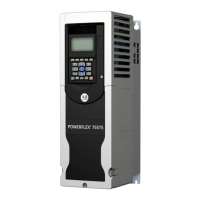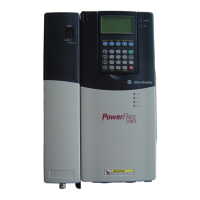Rockwell Automation Publication 7000-TG002J-EN-P - March 2015 33
Fault Messages Chapter 1
X Motor OvrCurrent 96 The measured motor current Stator Current (P340) has
exceeded the Mtr OvrCur Trip (P177) setting.
Possible causes include:
• Real OC/transients.
• Bad burden resistor/current sensor circuit failure – check components.
• Parameter settings too low compared to torque limit. Verify the parameter settings.
• Current regulator in limit (check line voltage and alpha line while running).
X Motor OvrLoad 101 A motor overload condition has been detected, where the
overload condition is calculated using I Stator (P340) and an
algorithm based on the value of Mtr OvrLoad Trp (P179) as
the absolute trip level, Mtr OvrLoad Dly (P180) as the base trip
delay, and Mtr OvrLoad Wrn (P351) as the point where the
overload calculation begins.
• Transient loading - check torque limit motoring, torque limit overload and motor overload
settings and compare loading to torque settings and trip settings.
• Burden resistor – Check HECS feedback and check the burden resistors.
X Motor Ovrspeed 102 The speed of the motor has exceeded the Mtr OvrSpeed Trp
(P185). Verify that parameter meets the load requirements.
Check for load transients
• Check for unbalance on the motor and line feedback voltages.
• Improper Settings – check parameter settings for reference command maximum and be
sure it is not too close to overspeed trip increase.
• Adjust the speed regulator bandwidth to control overshoot, and ensure acceleration rate
near maximum speed is not too great.
• Check for load transients.
• For tachometers - be sure the PPR is set properly and the feedback is valid.
• Check tachometer pulse train with an oscilloscope.
X Motor OvrVoltage 97 The measured motor voltage Stator Voltage (P344) has
exceeded the Mtr OvrVolt Trip (P181) setting.
• Parameter setting incorrect (flux command/trip values).
• VSB damage – check VSB resistors, grounds, and verify tap settings are correct.
• Self-Excitation – check for flying start/induced motor rotation.
• Make sure motor is not started in open circuit.
• Make sure drive is not started in open circuit. Verify that the motor is connected.
X Motor Protection 35 Standard external fault/warning input included allowing the
end-user to install a protective relay (for example, Bulletin
825 motor protection relay) auxiliary contact that can activate
a drive fault or warning, depending on configuration of Motor
Prot Class (P443).
• Check device responsible for the auxiliary contact to this input and investigate the fault
indicated by the device’s fault message.
• Investigate internal and external causes for this fault code.
• Check the 120V signal through the external device. Check the XIO board inputs and
parameter status bits.
X Motor Slip Range 106 Incorrect motor RPM has been entered for an induction
motor. Check the name plate data. Motor RPM cannot be the
synchronous RPM. Enter the correct data and cycle control
power.
• This fault cannot be reset until correct slip is programmed.
• If the motor nameplate shows synchronous RPM, then verify what the rated slip RPM is,
subtract the slip RPM from synchronous RPM.
• See tech note, PF7000_Gen-102, Determining Rated Motor RPM for Induction
Motors, for information on how to calculate rated motor RPM.
All Drive Types
PF7000A
PF7000B
PF7000C
Marine Drive
Heat pipe Drive
Fault Message Fault Code Description Recommended Action(s)

